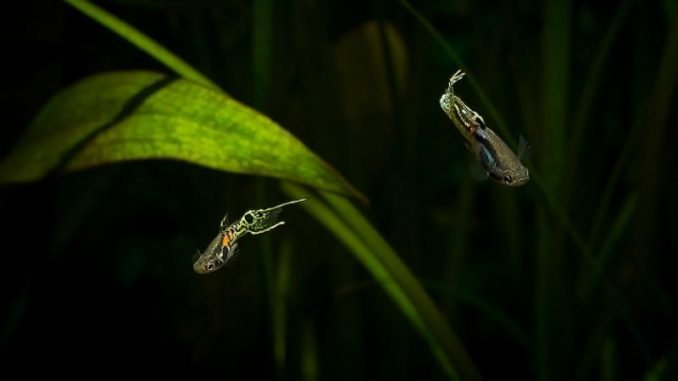
The Endler’s livebearer is a colorful and attractive freshwater fish species from the family Poeciliidae. These fish are entertaining and peaceful fish well suited to beginner aquarists.
Endlers are also popular with aquarists because these livebearing fish are easy to breed and produce fry that is resilient and requires little maintenance.
TABLE OF CONTENTS
Endler’s Livebearer Facts & Overview
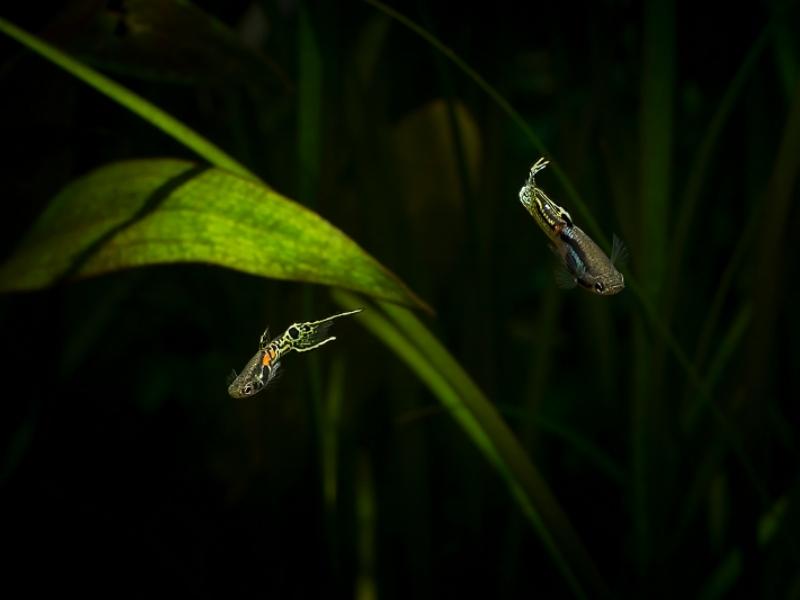
| Scientific name | Poecilia wingei |
| Breeding | Livebearers |
| pH | 7.0-8.4 |
| Temperament | Peaceful |
| Color | Various Colors |
| Life expectancy | 3-7 years |
| Distribution | South and Central Amrerica |
| Minimum tank size | 10-30 gallons |
| Hardness | 12-30 dGH |
| Care level | Easy |
| Common names | Endler guppy, livebearer |
| Size | 1-1.8 inches |
| Temperature | 68–82°F |
| Diet | Omnivore |
| Water hardness | 10-30 dGH |
Origin
The Endler’s livebearer is commonly found in South and Central America. Most of these fish thrive in Venezuela’s Paria Peninsula.
The fish’s natural habitats are unique due to their water chemistry, which has gradually shifted from brackish to freshwater.
Endler’s livebearers and their natural habitat have become threatened by human activity and water contamination, but the fish are not yet listed as an endangered species.
Only one of the four lakes that served as the fish’s original natural habitat remains. Otherwise, the fish can only be found in captivity.
Adult Size and Lifespan
The size of the Endler’s livebearer varies, ranging from 2 to 6 inches
The livebearer generally lives between three and seven years. An Endler guppy typically lives two to three years. Males often live longer than females.
Other factors, like the quality of care and heredity, also determine lifespan. To extend your fish’s lifespan, provide your fish with a diet rich in nutrients and a tank setting that is conducive to good health.
Availability
Endler’s livebearers can easily be found at common pet stores. Depending on color, size, and texture, an Endler’s livebearer fish ranges from $2–$6.
Appearance
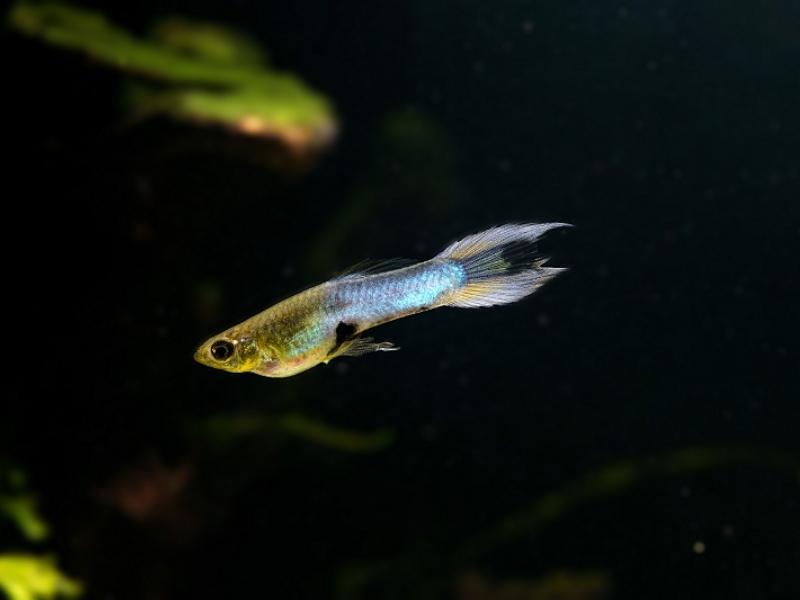
Endler’s livebearer fish are almost identical to Endler’s guppy fish, as the two are very close species. However, the Endler’s livebearer is known to have a more colorful and unique appearance.
Some of these fish have translucent bases, while others have very distinctive hues.
In comparison to females, males have slimmer profiles and more brilliant colors and shapes, growing up to 1 inch long.
Females have a rounder belly and are typically tannish-silver in color, growing to a length of 1.8 inches.
Colors, Patterns, Fins, and Sex Differences
Endler’s livebearers appear in a wide variety, all with different characteristics. Different varieties of fish can also be bred together to create new colors and appearances.
Class N: Class N is the purest type of species, originating from fish living in the species’ natural environment.
Class P: Although its origins are uncertain, Class P fish are virtually identical to Class N fish.
Class K: Fish in the Class K category are hybrid and crossbred fish found in pet stores.
Typical Behavior
Endler’s livebearers are highly active swimmers and enjoy exploring their surroundings. The fish love to greet and interact with visitors. However, the fish sometimes nip at the fingers of visitors who put their hands in the tank.
The males are usually more reserved in nature, while the females are more aggressive.
Habitat and Tank Setup
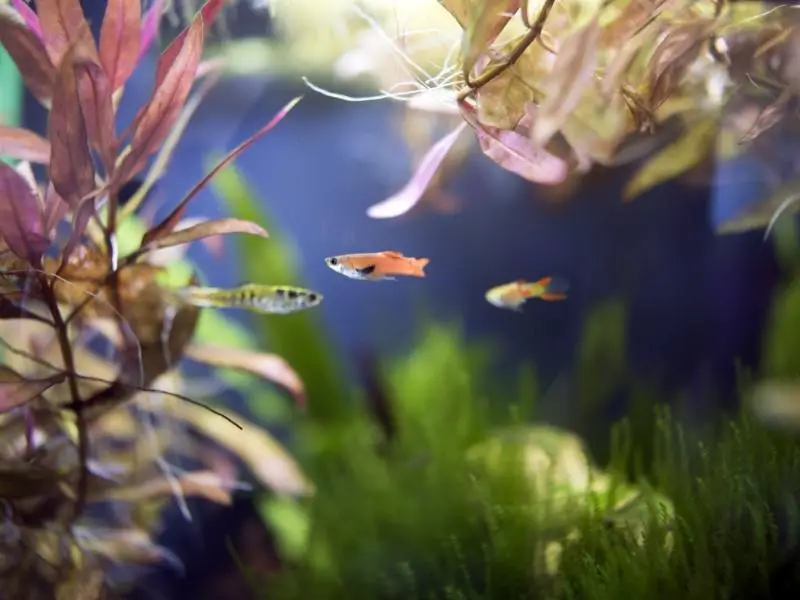
To replicate the fish’s natural habitat, add algae and plants to the tank. You may also add small pebbles or sand grains. Plants are important because they also act as a source of food.
Floating plants are a good choice, as well as stemmed plants that extend above the water’s surface.
Tank Requirements
Endler’s livebearers require at least a 10-gallon tank. A 20-gallon tank is even better, giving the fish more space to swim around, especially if there are other tank mates.
Make sure your tank has a lid, as these fish are known to jump out of the tank.
Tank Conditions
| Filter Type | Internal sponge filter |
| Substrate | A fine layer of sand |
| Water Temperature | 64–82°F |
| pH level | 7.0 to 8.2 |
| Best Plants | Floating plants and stemmed plants |
| Lighting | Yes |
| Decoration | Yes, live plants and algae |
Common Endler’s Livebearer Health Issues and Diseases
Livebearer fishes often suffer from the most common fish disease, ich. This condition is characterized by white spots and is more common when fish are under stress. To prevent ich, keep your tank’s water within the correct parameters, monitoring temperature and ammonia levels.
Parasites, fungi, and bacteria caused by overpopulation and higher ammonia levels can also affect these fish. To prevent these problems, make sure not to add too many fish to your tank.
Tank Mates
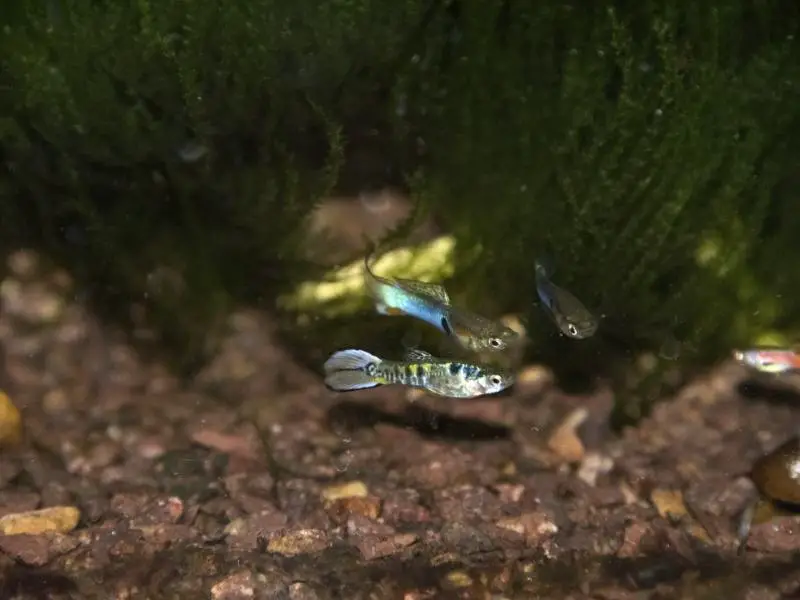
Endler’s livebearers are best kept with tank mates of the same species. However, the following types of fish can also be good tank mates.
- Cherry barb
- Ember tetra
- Dwarf gourami
- Honey gourami
- Neon tetra
- White Cloud
- Corydoras catfish
- Glassfish
- Glowlight tetra
You may also choose other tank mates for the livebearers. However, remember to pair livebearers with other peaceful fish
Don’t pair these peaceful fish with other popular guppy species because the two species will not get along.
Diet and Feeding
As an omnivore species, Endler’s livebearers can eat a variety of foods, including algae, bloodworms, brine shrimp, and fauna. The livebearers are not picky eaters.
You may also feed them flaky and frozen food, pellets, and live meals.
However, the fish has a small mouth opening, so you need to make sure the fish’s feed is small enough. Crush larger feed into smaller pieces before feeding.
Give the fish only a little quantity of food per feeding.
Breeding the Endler’s Livebearer
Breeding Endler’s livebearers are usually easy compared to other fish species. These fish are almost always raised in captivity, making breeding much easier.
To breed, simply keep male and female livebearers in the same tank. However, make sure to keep more female fish than males in the tank to avoid the same female fish getting pregnant and becoming stressed.
Should You Get an Endler’s Livebearer for Your Aquarium?
The answer to this question depends on the kinds of fish you already have in your aquarium. Avoid adding Endler’s livebearers to a tank that contains aggressive fish.
FAQs
How Big Do Endler’s Livebearers Get?
Males usually grow up to 1 inch long, while females typically grow to 1.8 inches long and have a rounder belly.
How Many Endlers Should Be Kept Together?
You may keep three or more Endler’s livebearer fish together. However, don’t keep male livebearers with females unless you’re specifically trying to breed them because the males are considered obstinate breeders and will annoy the female Endler’s until they become stressed and potentially die.
What Fish Can Live With Endlers?
Cherry barb, ember tetra, dwarf gourami, and honey gourami are some of the species that you can keep together with Endler’s livebearers.
Do Endlers Produce Lots of Waste?
Endler’s are not characterized as dirty fish. However, it’s still important to give livebearers a clean environment by using the right filtration system and keeping tank water within the correct parameters.

Be the first to comment